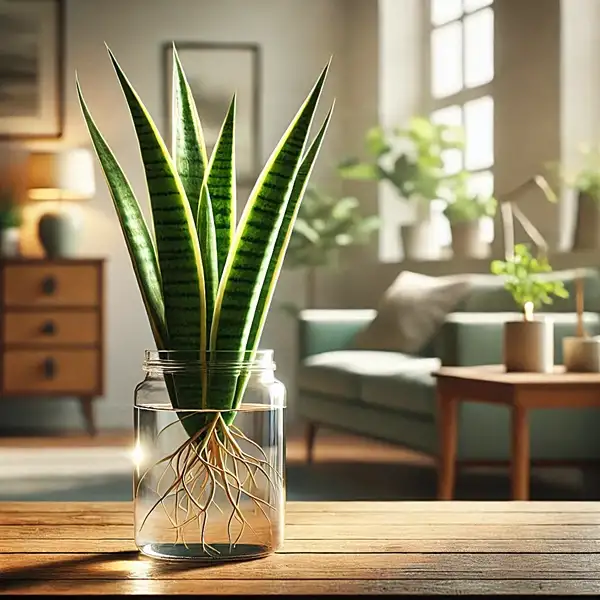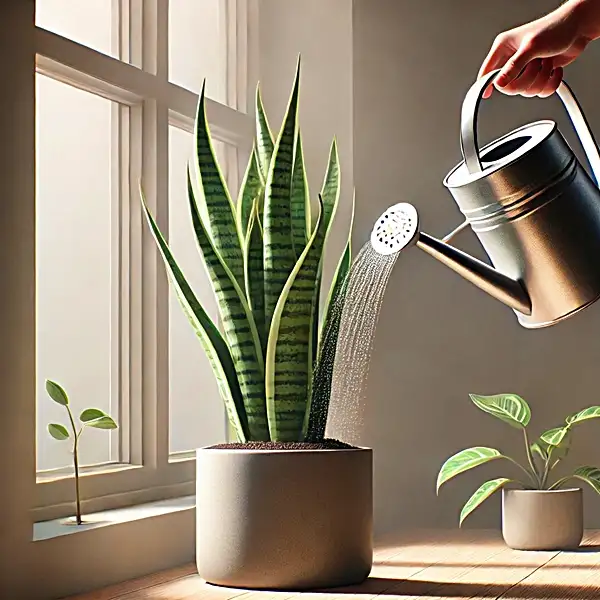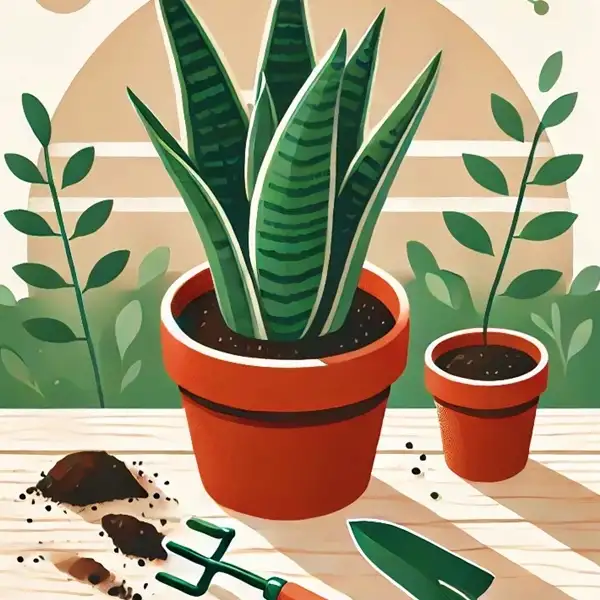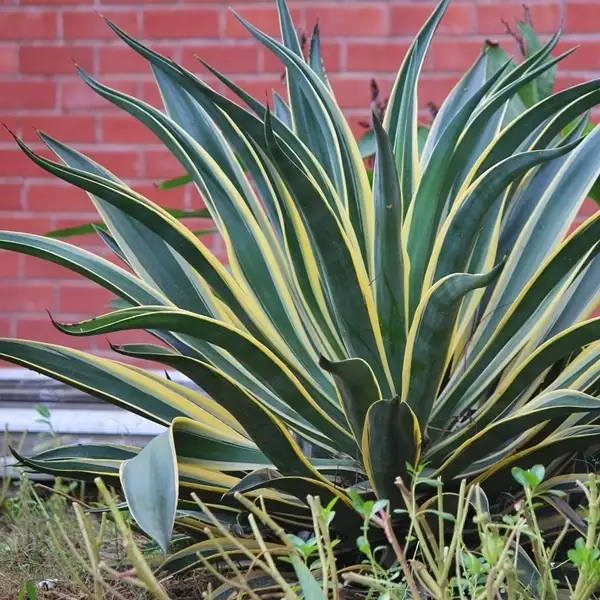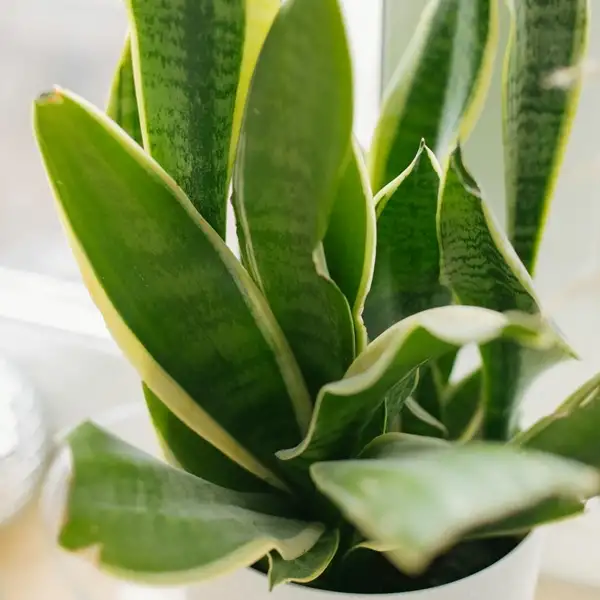Key Takeaways
| Key Takeaways | Why It Matters |
|---|---|
| Mastering the Right Watering Routine | Overwatering or underwatering? Find out how to avoid both |
| The Biggest Watering Mistake to Avoid | Most people do this unknowingly, putting their plant at risk |
| How the Environment Affects Watering | Seasons, light levels, and pot size all play a crucial role |
| The Secret Survival Tactics of Snake Plants | They thrive in harsh conditions—how do they do it? |
| Warning Signs: Is Your Plant in Danger? | Learn to recognize distress signals before it’s too late |
| Professional Tips for a Thriving Plant | How much water does a Snake plant need? Follow expert-approved methods for long-term health |
| Emergency Rescue: Reviving a Dying Snake Plant | Step-by-step solutions to bring your plant back to life |
Nature of Snake Plants
When beginners start caring for snake plants, they often ask local farmers or gardeners: ‘How much water does a snake plant need?’
The snake plant scientific name Sansevieria trifasciata is a popular houseplant often chosen for its hardy nature & striking appearance.
- Native to West Africa, it has thick & sword-shaped leaves that can rise vertically up to four feet.
- It comes in various color variations ranging from green & yellow to silver.
- Snake plants are notable for their adaptability & resilience. They flourish in moderate light but can also tolerate low light conditions. It makes them an excellent choice for indoor gardeners who lack an abundance of natural sunlight. Importantly, snake plants require less care compared to many other houseplants.
- A unique characteristic that makes this species stand out is its ability to improve air quality indoors as per NASA’s Clean Air Study research findings. The study exhibited how the snake plant eliminates toxins like benzene & formaldehyde from indoor air proving its worth beyond aesthetics only.

One quintessential aspect of snake plant care lies in understanding their watering needs appropriately. Even though they’re famous for surviving harsh environments and neglect over time, providing the right amount of water remains essential for their overall health. Overwatering or underwatering could lead them into different problems resulting in stunted growth or even death.
Watering Requirements for Snake Plants

Despite being versatile creatures tolerant to a wide range of climates and living conditions where they originate—like extremely arid locations—they need water sparingly when cultivated indoors as potted plants.
An Interesting Fact
An interesting fact about these succulent-like greens is that what we call “leaves” are actually modified stems designed specifically for storing water—an adaptation strategy employed by most desert-dwelling species.
How Much Water Does A Snake Plant Need?
- As a general rule of thumb suggested by PennState Extension horticulture educators; watering your snake plants once every 2-6 weeks should suffice during growing seasons (spring-summer) depending on factors including temperature levels within your home or office—warmer temperatures mean faster evaporation and hence increased water demand.
- During fall-winter periods when the plant growth slows, even lesser watering frequency is advised.
Signs of Overwatering and Underwatering
| Condition | Signs | Consequences |
|---|---|---|
| Overwatering |
|
|
| Underwatering |
|
|
When to Water a Snake Plant?

Allow your snake plant’s soil to completely dry out before the next watering session. Snake plants prefer a thorough drench rather than frequent light sprays; this means soaking the soil entirely during each watering and then leaving it dry until the next one – a practice similar to how heavy desert downpours occur followed by long bouts of dryness in their natural habitat.
5 Factors That Affect Amount of Water Required
| Factor | Impact on Watering |
|---|---|
| Temperature | Higher temperatures increase evaporation, necessitating more frequent watering. |
| Light Levels | Brighter light accelerates soil drying; low light reduces water needs. |
| Humidity | Low humidity causes faster moisture loss; high humidity retains soil moisture longer. |
| Pot Size and Material | Smaller pots dry out quicker; porous materials like terracotta allow faster evaporation. |
| Season | Growth periods (spring/summer) require more water; dormant periods (fall/winter) require less. |
4 Deadly Mistakes To Avoid in Snake Plant Care
| Mistake | Description | How to Avoid |
|---|---|---|
| Overwatering (Biggest Mistake) | Providing water too frequently, leading to waterlogged soil.
A quote from John from the New York Botanical Garden explains why this doesn’t work: |
Allow soil to dry out between waterings; use well-draining soil. |
| Underwatering | Infrequent watering causing prolonged dry soil conditions. | Check soil moisture regularly; water thoroughly when dry. |
| Using Non-Draining Pots | Pots without drainage holes trap excess water. | Ensure pots have drainage holes; consider using pots made of porous materials. |
| Insufficient Light | Reduced light decreases photosynthesis, slowing water absorption and leading to inconsistent maintenance. | Place the plant in moderate to bright indirect light for optimal health. |

Top 3 Adaptation Strategies Of Snake Plants
Resilience is key for any plant species surviving harsh environments. Snake plants exhibit this trait admirably by employing three primary adaptation strategies to deal with overwatering & underwatering.
| Adaptation | Description | Benefit |
|---|---|---|
| Thick, Waxy Leaves | Leaves are designed to store water efficiently | Allows survival during prolonged dry periods |
| CAM Photosynthesis | Stomata open at night to reduce water loss | Minimizes water loss in arid conditions |
| Robust Root System | Roots can withstand varying moisture levels | Prevents root rot & adapts to inconsistent watering |
2 Expert Tips for Properly Hydrating Snake Plants
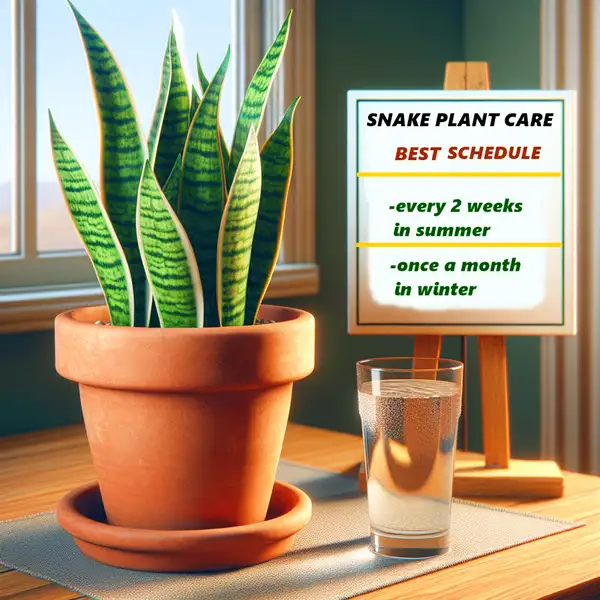
When watering your snake plant, consider the following tips and techniques –
Test Soil Before Watering
- Firstly, always check soil moisture levels before deciding to water.
- Use a moisture meter or simple finger test by inserting it an inch or two into the soil. If it comes out dry, then that’s an indication that your plant needs water.
‘Soak and Dry’ Method
- Secondly, remember the method of ‘soak & dry’—water thoroughly until you witness drainage kicking in through the bottom holes, then allow ample time for the soil to dry completely before scheduling the next round.
- This ensures minimal risk of root rot developing which can occur over time if same overwatering pattern repeats consistently.
Frequently Asked Questions
How much to water a large snake plant?
Water thoroughly until excess drains out but only when soil is completely dry.
How to tell if snake plant needs water?
Insert a finger an inch deep—if dry, it's time to water. Wrinkled or curled leaves also signal thirst.
How do I know if my snake plant is rotting?
Look for mushy, dark roots, yellowing leaves or a foul odor from soil. These are signs of overwatering & poor drainage.
How to fix a soggy snake plant?
Remove it from pot, trim rotting roots, let them dry & repot in well-draining soil. Only water when soil is fully dry.
What does a thirsty snake plant look like?
Leaves become wrinkled, curled or dry & plant feels lighter when lifted.
How to fix a dying snake plant?
Identify the issue - overwatering, underwatering or low light. Trim damaged roots, repot in fresh soil & adjust care conditions.
How do I know if I overwatered my snake plant?
Yellow patches, drooping leaves & persistently wet soil indicate overwatering. Check for mushy roots.
Can you save a snake plant after overwatering?
Yes! Remove from soggy soil, trim rotting roots, repot in well-draining soil & reduce watering frequency.




